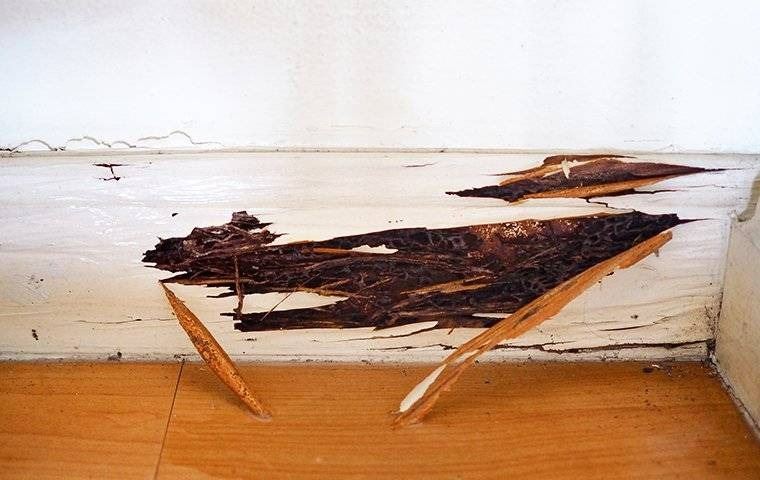
How To Spot A Termite Problem On Your Charlotte, NC Property
How much do you know about termites? Do you know that you can have a million termites in your yard and not know it? In Charlotte, North Carolina, the termites that threaten our properties are subterranean termites. They live under the ground and do not prefer to expose themselves to the air or to the light. This can make them extremely difficult to detect. Let's take a closer look at this and other factors that can make it difficult to detect Charlotte termites. More importantly, let's use this information to give you a better chance of detecting trouble early.

They Have An Aversion To Light
This is perhaps the most important fact you could know about termites. Termite workers avoid the light. More than this, they're most likely to create warning signs in dark places that are difficult to see into, such as underneath your deck, or in a crawl space under your home. This can make a termite inspection a grueling task, especially if your property has lots of these dark areas. If you're aware of this, you'll be more motivated to look where you need to look. This will require you to use a flashlight and a mirror to look down each of the concrete piers under your home if your home sits on piers.
They Dry Out
A termite worker has thin skin. If it dries out, it dies. This is one reason why it avoids being out in the sunlight. The sun can quickly dry a termite. But a termite can dry out in the darkness as well. If the air is dry, termites will stay hidden. This causes termites to stay hidden in their tunnels, even at night. Fortunately, this trait causes them to create a warning sign for you. When subterranean termites attack your Charlotte home, they're likely to create shelter tubes. These above-ground mud tunnels protect them from the dry air. You might find them on concrete walls and on other surfaces during your inspections. You may also find mud patches on wood. Termite workers use soil and saliva to patch up breaches in their tunnel walls.
They're Small
A termite worker is only ⅛ of an inch long. That's really small. Let's put this into perspective. If you pick up a dead branch in your yard and you see a dozen "maggots" clinging to the branch, and those "maggots" use their legs to crawl into the wood, they're not maggots. They're subterranean termites. Termite workers are much smaller than most people expect. If you're aware of this, you won't be so quick to discard the evidence of subterranean termites on a dead branch or some other wood source in your yard. You'll also know to look closely at tiny, pale-colored bugs and see if they have six legs.
They're Quiet
When termites feed on your home, you're not likely to hear them. The scraping noise they make while eating is hard to detect. You're more likely to hear soldier termites. When tunnels are invaded by an adversary, such as ants, termites soldiers will bang their heads on the tunnel walls. This noise will sound like clicking or rattling. So, while workers can be somewhat quiet, the soldiers might make a noise you can detect.
They Emerge Outside
One of the most noticeable warning signs of a termite infestation is the presence of termite swarmers on the inside of a structure. Termites swarmers in Charlotte are black with long white wings. At about ⅜ of an inch in length, they're pretty small. But when you find a hundred of them in your living room, you won't have to wonder if you have an infestation. Unfortunately, swarmers usually emerge outside. Unlike the workers, termite swarmers are attracted to light. The interior of your home is probably not bright enough to draw swarmers out. If you do find swarmers in your home, it is a warning sign of a severe infestation. This is because the colony has to be very close to your home in order for this to happen.
They Don't Swarm Long
When swarmers emerge outside, you may be able to see them clinging to your exterior walls by the hundreds. If so, it can be a helpful warning sign. But, once again, termites don't make it easy for you. When termite alates gather together to mate, they don't take more than 30 minutes to get the job done. That means the swarm can gather and dissipate in the time it takes you to take a shower. Fortunately, they shed their wings during the mating process. You can look for these wings on your property to tell if you have an infestation.
When You Find Termites
Now that you know some ways to help you detect termites on your property, what do you do when you find them? Termites are destructive and sneaky insects. It is best to have a licensed termite control professional properly deal with this threat.
Reach out to Go-Forth Home Services. We can guide you toward the right solution for your property.
Customer Reviews
-
“He spent time educating us about "pests" and provided information regarding services with GoForth.”- Joyce C.
-
“Texted me before coming. Worked with me playing musical rooms with my dogs. I'll see how things are.”- Constance E.
-
“Amazing response time, reasonable prices, great customer service. Tevin was thorough and confident in his plan to fix our horrendous fire ant problem. We have had negative experiences with prior exterminators and probably waited way too long to call Go-For”- Ashley T.
-
“- Toya B.
We have been customers for almost 7 years for a reason. Our technician is the best. He always knows exactly how to address whatever pest has decided to bother us. We have referred them to many of our neighbors. Well worth the cost not to have to worry a
” -
“Answered all my questions and I felt their pricing was very reasonable.”- Deborah J.
-
“Brian went above and beyond what was expected, and I hope I get him again as my technician for future services!”- Tam L.
-
“He was thorough with inspecting and treating our home, which I really appreciate, and he took the time to answer my many questions.”- Jasmine B.
-
“Love the detailed summary and pics of what he did and saw! And did I mention how wonderful Olivia was to get us all set up?!!”- Beechy A.


Over the years, we’ve boiled down our mission to a core set of values:
-
Give A CrapDelight others by owning your role and saying yes. Take pride in how you appear & act & every other detail of the job. Be on time, attentive, & enthusiastic. Act as if the buck stops with you on every aspect of the job.
-
Chase PerfectionChase Perfection, knowing full well we will not reach it, but along the way we will catch excellence. Have a sense of urgency; Go-Forth Time - right now might be the only time you have to get it right.
-
Dig Deeper
Be an action-oriented professional that makes decisions based on evidence rather than stories & assumptions. Stay curious. Data can speak for itself.
Understand the cause of the fire rather than rushing to extinguish it.
-
Fight For SimplicityKeep it simple & consistent. Focus on how things should be done every time.
-
Face It, Fix ItConfront challenges directly and address issues head-on. A bias for action and powerful conversations drive our progress. It’s about getting it right rather than being right.
-
Grow!Growth is our purpose. Growing as people & growing our business.